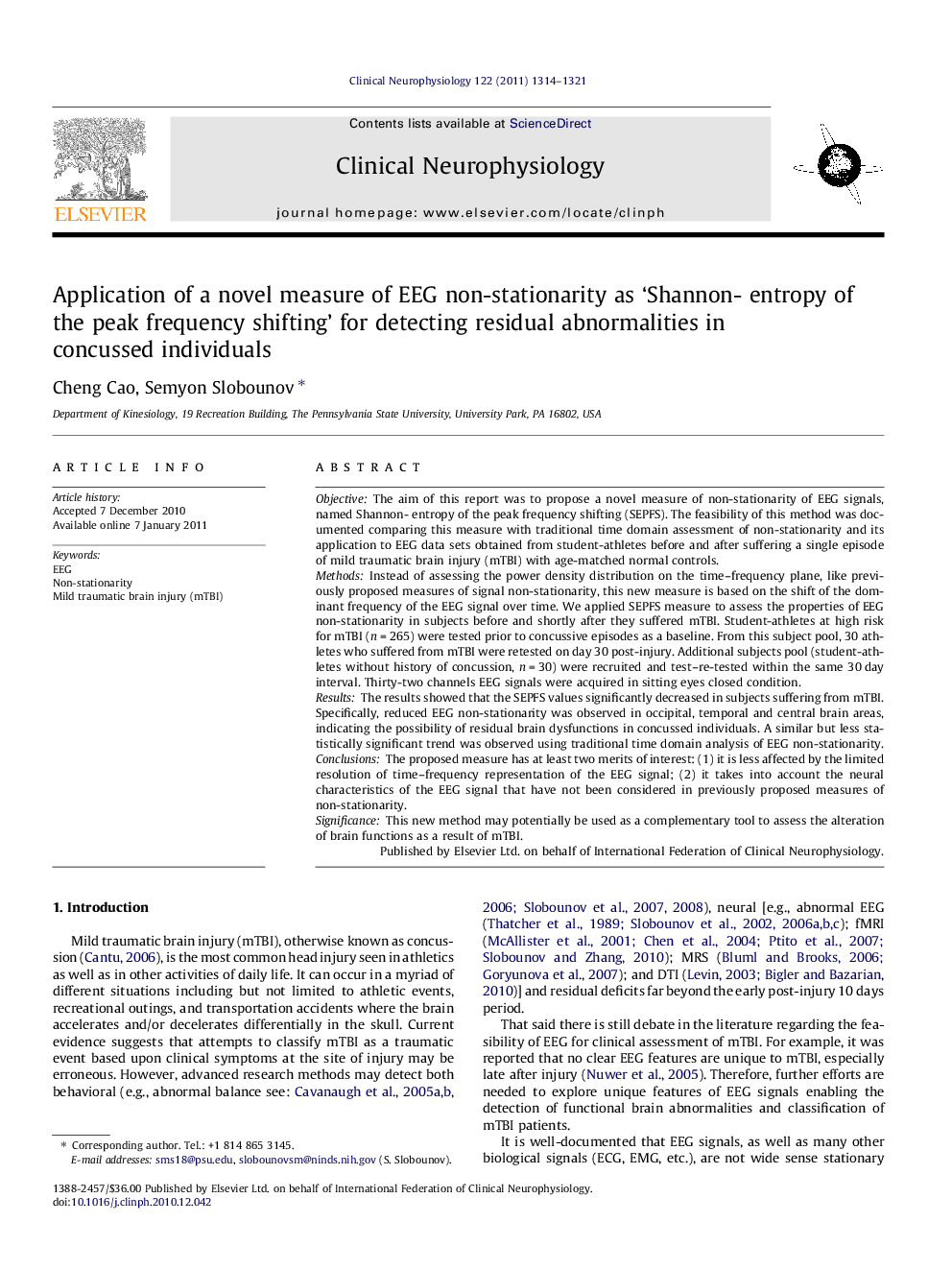| Article ID | Journal | Published Year | Pages | File Type |
|---|---|---|---|---|
| 3044774 | Clinical Neurophysiology | 2011 | 8 Pages |
ObjectiveThe aim of this report was to propose a novel measure of non-stationarity of EEG signals, named Shannon- entropy of the peak frequency shifting (SEPFS). The feasibility of this method was documented comparing this measure with traditional time domain assessment of non-stationarity and its application to EEG data sets obtained from student-athletes before and after suffering a single episode of mild traumatic brain injury (mTBI) with age-matched normal controls.MethodsInstead of assessing the power density distribution on the time–frequency plane, like previously proposed measures of signal non-stationarity, this new measure is based on the shift of the dominant frequency of the EEG signal over time. We applied SEPFS measure to assess the properties of EEG non-stationarity in subjects before and shortly after they suffered mTBI. Student-athletes at high risk for mTBI (n = 265) were tested prior to concussive episodes as a baseline. From this subject pool, 30 athletes who suffered from mTBI were retested on day 30 post-injury. Additional subjects pool (student-athletes without history of concussion, n = 30) were recruited and test–re-tested within the same 30 day interval. Thirty-two channels EEG signals were acquired in sitting eyes closed condition.ResultsThe results showed that the SEPFS values significantly decreased in subjects suffering from mTBI. Specifically, reduced EEG non-stationarity was observed in occipital, temporal and central brain areas, indicating the possibility of residual brain dysfunctions in concussed individuals. A similar but less statistically significant trend was observed using traditional time domain analysis of EEG non-stationarity.ConclusionsThe proposed measure has at least two merits of interest: (1) it is less affected by the limited resolution of time–frequency representation of the EEG signal; (2) it takes into account the neural characteristics of the EEG signal that have not been considered in previously proposed measures of non-stationarity.SignificanceThis new method may potentially be used as a complementary tool to assess the alteration of brain functions as a result of mTBI.
